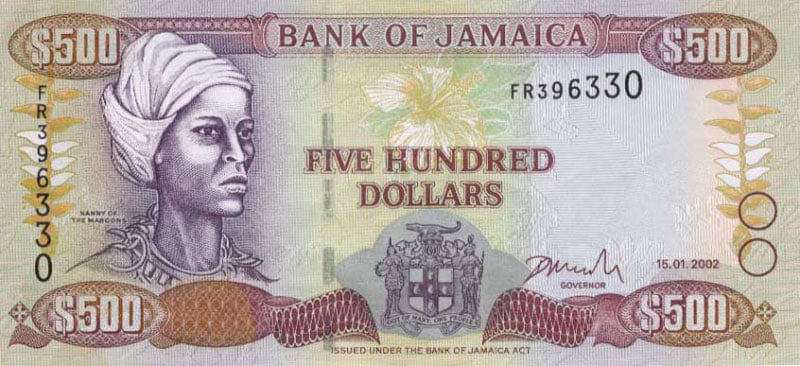
What comes to mind when you hear the word, maroon?
Is it a color? A dark red? Well, yes. But, like many words, it has multiple meanings depending on the context.
Its origin may be from the French word marron, a “runaway black slave,” or possibly from the American/Spanish cimarrón, “wild runaway slave,” “the beast who cannot be tamed,” or “living on mountaintops”. The Spanish use referred to stray cattle. It is believed by others that the word cimarrón is from cima or “summit” (Britannica). There are other theories as well.
Sometimes all that separates us are words.
Blacks and Jews alike escaped and formed their own communities at different times and places. Blacks did so in the Americas during slavery, and Jews did so during the Second World War when avoiding or escaping forced labor and extermination camps.
The Black communities were often known as Maroons. Even though similar Jewish groups were referred to by the word partisans instead, they served similar functions. Blacks, Whites, Africans, Jews and people throughout history, have formed outpost settlements with dual purposes, to form a protected community in order to garrison and fight the enemy.
Let’s travel back in time inside deep forests in what was eastern Poland, today’s western Belarus, when thousands of Jews were being killed by German authorities. Among the murdered were the parents and two sons in the Bielski family, leaving four surviving brothers who made haste to the forests. Many joined them and some non-Jewish friends helped get guns into their hands.
The partisans’ mission: to save as many Jews as possible. A small working community soon formed with various artisans along with a bakery, a mill and a laundry, to support their efforts. In their military operations, the Bielski Partisans “disabled German trains, blew up rail beds, destroyed bridges, and facilitated escapes from Jewish ghettos” as well as carrying out killings of local farmers they suspected of collaborating with the enemy, and fighting military invasions (United).
Let’s travel back to another time and place, early 18th century Jamaica. The Spanish moved onto the island in 1509 and brought people they enslaved with them. When the British invaded almost a century and a half later, their descendants escaped to the hills. There they grew “cocoa, sugar cane, plantains, melons, yams, corn, banana, wild yams and roots, and cabbage.” They hunted, and raised hogs and birds, to eat and like the partisans, had a tradesman class, and again, like the Bielskis, took to arms as needed (Brooks).
One of the military Maroon leaders was a woman known as Nanny.
If you ever travel to Jamaica and come upon a $500 Jamaican dollar bill [NOTE: See illustration], you will find an artist’s take of her possible likeness, and the caption, “Nanny of the Maroons.” She is a national hero with many stories told in the oral tradition.
The British captain, Philip Thicknesse, fought against the Maroons and wrote about her in his memoir.
“The old hag had a girdle around her waist with nine or ten different knives hanging in sheaths to it, many of which I have no doubt have been plunged in human flesh and blood” (Card).
Many legends are told of Nanny, but only a couple have been consistently told over the years. Here is one of them.
At the base of the mountain where she lived was a large metal pot with a lid and handle. But this cauldron was no ordinary one. It held boiling water at all times and without the benefit of a single stick of wood beneath it to feed a fire. The heat came from Nanny’s supernatural powers alone. And if a European dared to step foot in the encampment, down they would go into the pot and die (Miles).
According to the Jamaica Information Service, Nanny undermined the British on the plantations with her two sisters’ help and was a highly skilled leader and tactician in her people’s guerilla warfare. This was important, especially during the First Maroon War, a war waged from 1720 to 1739.
International Holocaust Remembrance Day fell a few short days ago, January 27th. Now we find ourselves in February at the start of African American History Month. Significantly, the dates almost overlap. And so do some of their stories.
Human suffering and our responses to it prove we have more in common than that which separates us.
Susan Elliott
Independent Researcher
WORKS CITED:
Brooks, Jonathan. “From Freedom to Bondage: The Jamaican Maroons, 1655-1770.” University of North Carolina Wilmington.https://uncw.edu/…/documents/jonbrooksuncwmarroonage.pdf. Accessed 1 Feb. 2021.
Card, Maisy. “First Mothers.” The Paris Review. 21 Sept. 2020.
https://www.theparisreview.org/…/2020/09/21/first-mothers/. Accessed 1 Feb. 2021. I identified the full name and position of the British captain in Card’s writing and the full quote in the following: “Nanny of the Maroons: The Right Excellent Nanny of the Maroons, National Hero of Jamaica.” Caribbean Elections. http://caribbeanelections.com/…/biography/bios/nanny.asp
Jamaica Information Service. “The Voice of a Maroon The Story of Nanny of the Maroons.” Video. Air Date: 10/10/2018. https://jis.gov.jm/…/the-voice-of-a-maroon-the-story…/
Miles, Dawn Michelle. Resisting in Their Own Way: Black Women and Resistance in the British Caribbean. 2010. Ohio State U, PhD dissertation. Miles cited Ghosts of Slavery: A Literary Archaeology of Black Women’s Lives. (Minneapolis, University of Minnesota Press, 2003), 2. https://etd.ohiolink.edu/apexprod/rws_etd/send_file/send…
United States Holocaust Memorial Museum.“The Bielski Partisans.” Holocaust Encyclopedia. https:/encyclopedia.ushmm.org/content/en/article/the-bielski-partisans. Accessed 1 Feb. 2021.
ILLUSTRATION:
“Nanny.” Colonial Williamsburg. Slavery and Rememberance: A Guide to Sites, Museums, and Memory. http://slaveryandremembrance.org/people/person/?id=PP023. Accessed 1 Feb. 2021.